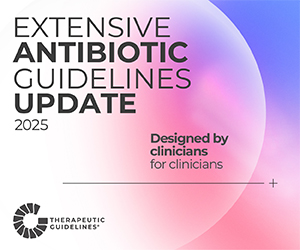Healthcare professionals (HCP) are often involved in providing care to vulnerable people, including the very young, the elderly and those compromised through physical and or mental illness. The use of restraint and seclusion for such vulnerable people has been significantly restricted as a means of control unless deemed to be a necessary measure where it is necessary to use restraint/seclusion to protect the person from self-harm or from harming others.
Any restriction on a person’s liberty of free movement has the potential to infringe on basic human rights and the more restrictive, the more risk there is to the patient. Hence, when seclusion and restraint are employed as a measure to keep the patient and others safe, staff need to be aware that this is highly regulated both through legalisation such as Mental Health Acts the common law, organisational policy and professional standards.
It is imperative that HCP’s are familiar with this framework making sure that they both practise within their scope around this and meet the expected standard of care during the period of seclusion or restraint.
In cases where this is not observed the risk for poor patient outcomes is high as in the recent findings in the Inquest into the Death or Ricky Noonan, (2020) where the cause of death was determined to be hypoxic-ischaemic brain injury attributed to cardiac arrest due to choking. The patient choked on a sandwich whilst supposedly under continuous supervision.
The deceased diagnosed with paranoid schizophrenia and depression had a history of suicide attempts and presenting on numerous occasions in an agitated and manic state, often in the context of amphetamine, cannabis and alcohol abuse. Mr Noonan suffered from persecutory delusions involving people wanting to hurt him and had a forensic history in relation to a number of assault charges. He was admitted to an acute psychiatric facility, and during the course of this admission, there were a number of code blacks due to his aggression, which resulted in 16 episodes of seclusion. The final order for seclusion followed him punching another patient in the head for no apparent reason and threatening to kill a nurse.
An important issue in the seclusion policy, in this case, was the need for patients in seclusion to be continuously monitored. However, what was meant by ‘continuous monitoring’, was unclear amongst the staff resulting in inconsistent practice. Some staff interpreted this policy as meaning that the patient must be sighted and communicated with at least every fifteen minutes. Another view was that CCTV was not a nursing intervention and did not replace the need to do 15 minutely checks, whilst another informed the court that it was just common practice not to continuously view the CCTV monitor but to glance at it every 15 minutes. In the Coroner’s view, the intent of the policy was that a very close if not continuous eye should be kept on secluded patients, particularly given there was a requirement to undertake 15-minute sightings of all patients on the ward wherever they were. Therefore, one would have thought that secluded patients would have been subject to a closer degree of scrutiny than the 15-minute intervals that applied elsewhere in the ward.
What was apparent from the CCTV in the nurses’ station was that at the critical time all three nurses were present, one looking at a mobile phone or device, one at a computer screen and one at a magazine or computer screen – none of them were watching the monitor. Had they done so what they would have observed was a harrowing account of the patient hunching over, putting his hand to his mouth, apparently coughing and apparently kicking on the door and his eventual collapse onto the floor where he lay motionless on his back.
It was at this point that a nurse glanced at the screen and the alarm was raised. Unfortunately, it was too late and Mr Noonan could not be resuscitated having choked on the food he was left unsupervised to consume.
The Coroner concluded that the observation of the deceased prior to his death was haphazard and inconsistent due to the policy not being understood nor consistently adhered to by staff. The patient who required continuous monitoring in the seclusion room either by direct viewing or by way of CCTV monitoring was ‘at best intermittent and superficial and on any analysis unsatisfactory’.
Policies are important documents, however, their value is only realised when they are understood by all staff, enforced and practised. This case serves as an unfortunate example of what can happen when one or more of these criteria are not met.
Reference
Inquest into the Death or Ricky Noonan, (2020) Coroners Court SA.
Author
An expert in the field of nursing and the law Associate Professor Linda Starr is in the School of Nursing and Midwifery at Flinders University in South Australia








